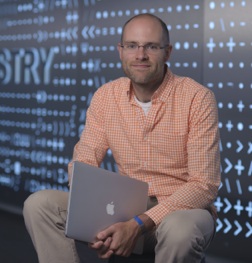Robotics Seminar
The Bigger They Are, The Harder They Fall: Optimization Methods for Robust Planning and Control of Humanoids and UAVs
Add to Google Calendar

Despite the incredible success stories from robotics in the last few years, many of our best planning and control algorithms are still far from transitioning out of the research lab and into the real world. Fielding a humanoid robot in a disaster environment, or flying a UAV at high speeds through a cluttered environment requires reliable online planning in novel environments, and robustness to uncertainty from perception, imperfect actuators, and model errors. For legged robots and robot manipulation, this is made even more challenging by the fact that contact with the (uncertain) environment plays a central role in the dynamics.
I believe that transitioning dynamic robots to the real world requires an explicit focus on robustness, which has natural formulations using optimization. Making these optimizations tractable requires exploiting sparsity and convexity in our robot equations, and making informed relaxations. In this talk, I will review our best attempts to date and give examples with fast vision-based UAV flight through clutter and MIT's entry into the DARPA Robotics Challenge.
Russ is the X Consortium Associate Professor of Electrical Engineering and Computer Science, Aeronautics and Astronautics, and Mechanical Engineering at MIT, the Director of the Center for Robotics at the Computer Science and Artificial Intelligence Lab, and the leader of Team MIT's entry in the DARPA Robotics Challenge. He is a recipient of the NSF CAREER Award, the MIT Jerome Saltzer Award for undergraduate teaching, the DARPA Young Faculty Award in Mathematics, the 2012 Ruth and Joel Spira Teaching Award, and was named a Microsoft Research New Faculty Fellow. Russ received his B.S.E. in Computer Engineering from the University of Michigan, Ann Arbor, in 1999, and his Ph.D. in Electrical Engineering and Computer Science from MIT in 2004, working with Sebastian Seung. After graduation, he joined the MIT Brain and Cognitive Sciences Department as a Postdoctoral Associate. During his education, he has also spent time at Microsoft, Microsoft Research, and the Santa Fe Institute.
 MENU
MENU 
